Gordon Memorial Home, Nottingham, Nottinghamshire
The Gordon Memorial Home (or Orphanage) in Nottingham was founded following a public meeting in the city on 10th June, 1885. It was named after General Charles George Gordon who had recently died in the siege of Khartoum, and was one of several boys' homes to commemorate him in this way. The Nottingham home was a successor to Boys' Brigade in which provided employment poor boys during the day, but who returned to their own homes in the evening. It was felt that a residential institution was needed to train the boys could be "nurtured with care, and trained in habits of industry.".
A subscription list was opened to raise funds for the home and the establishment was officially opened on December 18th, 1885, at Argylle House, Shakespeare Street, Nottingham. The premises could house thirteen boys.
Six years later, on 13th November, 1891, larger premises were opened by the Duke and Duchess of Portland at 28-30 Peel Street, Nottingham. The home could now accommodate 40 boys. At the end of March, 1901, there were 35 inmates aged from 10 to 17 years, with Samuel and Emilie Wood as master and matron.
In 1899, a site on Cranmer Street, Nottingham, was purchased for £1,168 to allow the construction of purpose-built accommodation for the home. After the cost of the land had been paid off in February, 1903, work began on a building to accommodate 80 boys. On August 5th of the same year, the foundation stone for the new home was laid "with Masonic ceremony" by the Duke of Portland.
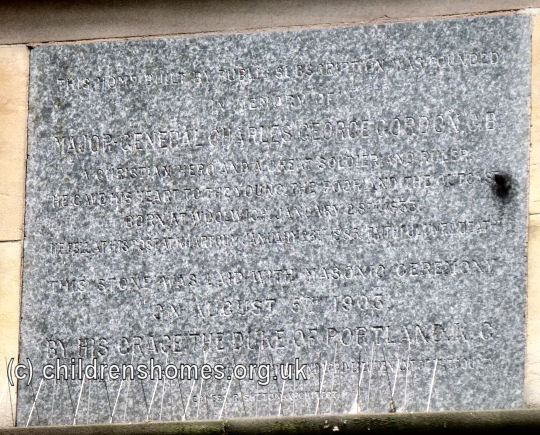
Former Gordon Memorial Home foundation stone, Nottingham, 2014. © Peter Higginbotham
The wording on the foundation stone read:
IN MEMORY OF
MAJOR-GENERAL CHARLES GEORGE GORDON, C.B.
A CHRISTIAN HERO AND A GREAT SOLDIER AND RULER.
HE GAVE HIS HEART TO THE YOUNG, THE POOR AND THE OUTCAST.
BORN AT WOOLWICH, JANUARY 28TH, 1833.
HE FELL AT HIS POST AT KHARTOUM, JANUARY 26TH, 1883.
THIS STONE WAS LAID WITH MASONIC CEREMONY
ON AUGUST 5TH, 1903.
BY HIS GRACE THE DUKE OF PORTLAND, K.G.
PROVINCIAL GRAND MASTER OF NOTTINGHAMSHIRE and LORD LIEUTENTANT OF THE COUNTY.
ERNEST R. SUTTON, ARCHITECT.
The completed building, whose total cost amounted to about £7,000, was officially opened in May, 1904, by the Duchess of Portland.
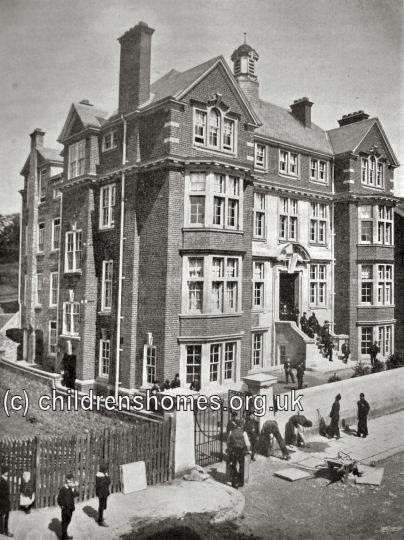
Gordon Memorial Home from the south-west, Nottingham, c.1905. © Peter Higginbotham
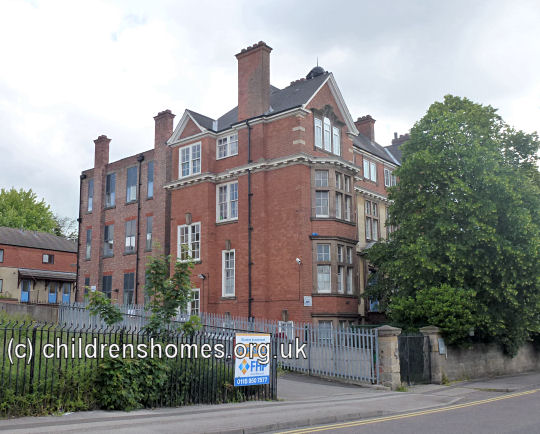
Former Gordon Memorial Home from the south-west, Nottingham, 2014. © Peter Higginbotham
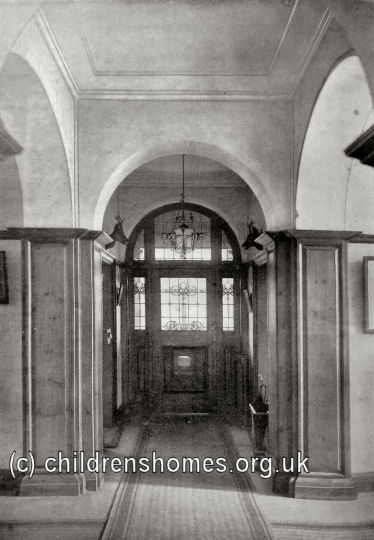
Gordon Memorial Home entrance hall, Nottingham, c.1916. © Peter Higginbotham
The building was described as spacious and substantial, and the living rooms and dormitories all light, with plenty of ventilation. The whole building was warmed in winter by hot-water pipes radiating from a large boiler in the basement. The basement floor also contained cloak-rooms, bath-room, day lavatories, boot-cleaning and brushing rooms, while on the ground floor were the dining hall, capable of accommodating 40, with kitchen, scullery, plates, dishes, and washing-up room adjoining. A shutter window between the kitchen and dining room allowed for the service of food. The committee and waiting rooms were situated on the south side of the main entrance from Cranmer Street, and the office and Master's and Matron's rooms on the north. The first and second floors were devoted to dormitories and bedrooms for the boys and the staff, with adequate bath-room accommodation; and there was a hospital on the second floor, with separate offices. The staircases were of stone throughout, and a fire escape staircase was provided from the dormitories. In the yard there were bath-chair, cart, and barrow houses, and a spacious play and drill ground were provided.
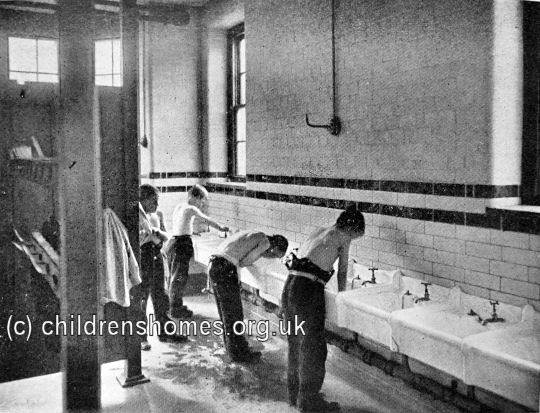
Gordon Memorial Home washroom, Nottingham, c.1916. © Peter Higginbotham

Gordon Memorial Home bathroom, Nottingham, c.1916. © Peter Higginbotham
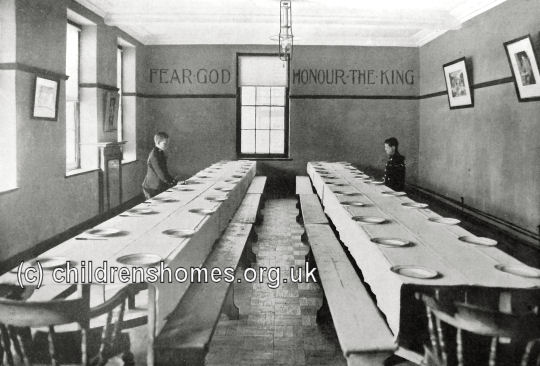
Gordon Memorial Home dining room, Nottingham, c.1916. © Peter Higginbotham
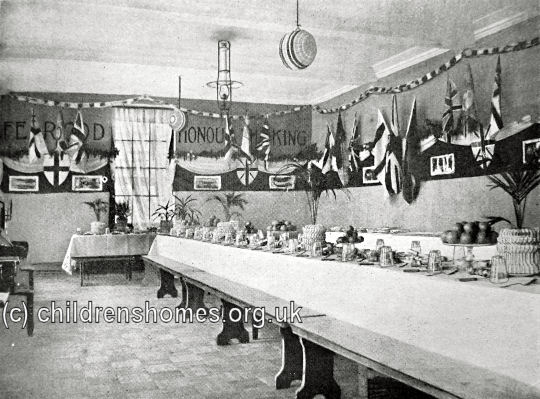
Gordon Memorial Home dining room at Christmas, Nottingham, c.1916. © Peter Higginbotham
The household rose at 5.30a.m. as many of the working boys had to leave for their jobs very early. Boys under 14 went out to school morning and afternoon. Boys working full-time were allowed to keep a penny in the shilling of their earnings, which was placed for them in a savings bank account. The home had its own gymnasium and its football team was reputed locally to be invincible.
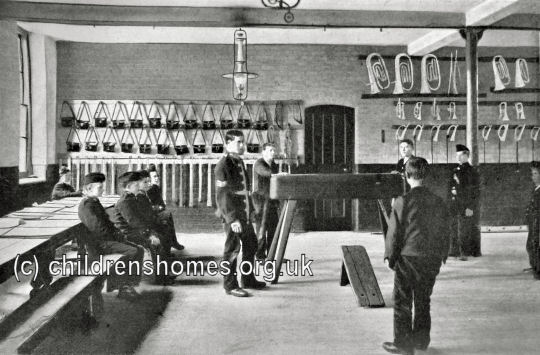
Gordon Memorial Home gymnasium / band room, Nottingham, c.1916. © Peter Higginbotham
Some of the older boys were allowed the use of a small room as their own club-room, managed by themselves without any interference from the staff. The home's brass band gave performances at events in the area and the musical training it provided led to career as military bandsmen for some of the boys.
In around 1914, the then master, Mr Brooke, set up a Scout Troop for the boys.
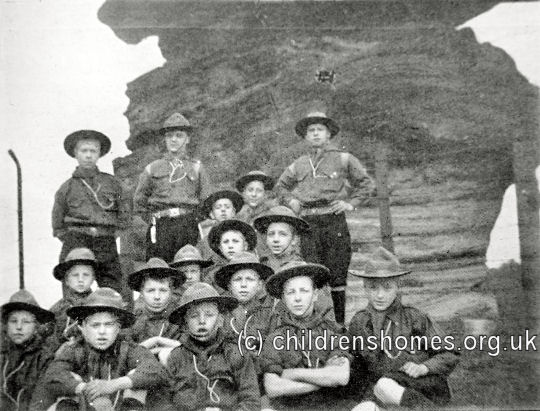
Gordon Memorial Home, Nottingham, Scouts' outing, c.1916. © Peter Higginbotham
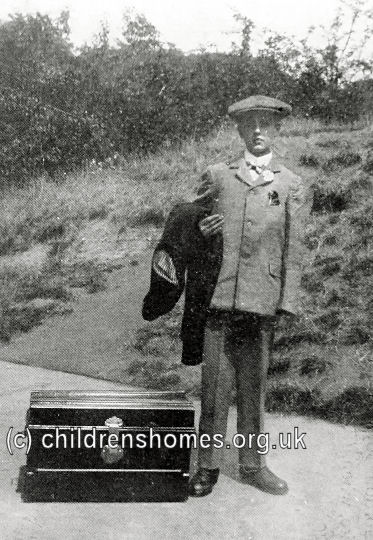
Gordon Memorial Home, Nottingham, boy leaving the home, c.1916. © Peter Higginbotham
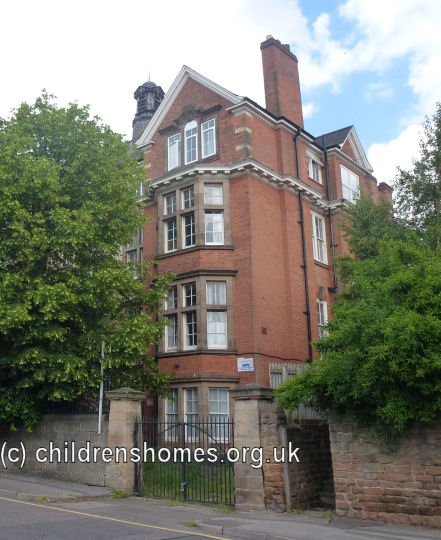
Former Gordon Memorial Home from the south-east, Nottingham, 2014. © Peter Higginbotham
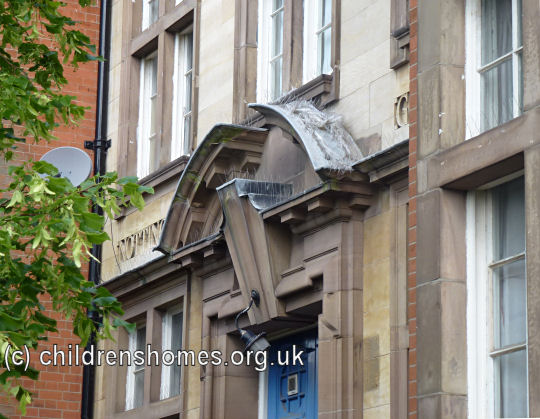
Former Gordon Memorial Home, Nottingham, 2014. © Peter Higginbotham
In 1958, the home moved to 'Enderleigh', Alexander Park, where it continued in operation until December, 1965. Proceeds from the sale from the property were used to found the Nottingham Gordon Memorial Trust for Boys and Girls, which awarded grants for youth projects.
In more recent times, the Cranmer Street property has been used as student accommodation. The Alexander Park premises were subsequently used as a Remand Home and are believed to now be in private residential use.
Records
Note: many repositories impose a closure period of up to 100 years for records identifying individuals. Before travelling a long distance, always check that the records you want to consult will be available.
- Nottinghamshire Archives and Southwell Diocesan Record Office, County House, Castle Meadow Road, Nottingham NG2 1AG. Holdings include: Application and admission registers (1884-1965); Accounts (1949-65); Old boys' newsletters (1967-70).
Bibliography
- Higginbotham, Peter Children's Homes: A History of Institutional Care for Britain s Young (2017, Pen & Sword)
Links
- None identified at present.
Except where indicated, this page () © Peter Higginbotham. Contents may not be reproduced without permission.


